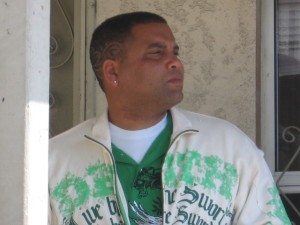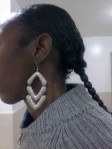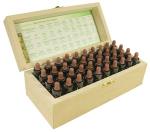
Tres Mali Scott, M.Ed., M.S., Ph.D. (ABD) ATWS Drug Treatment Progam Longitudinal Research Study Program. Attened Langston University Langston, Oklahoma (HBCU)
TMSC International® ‘s Acute Total Withdrawal System (ATWS) Longitudinal Research Study 2003 – 2014 for Day and Residential Drug Treatment Programs was conducted by:
Tres Mali Scott, M.Ed., M.S., Ph.D. (ABD) Leader Ressearcher and Observation Manager ATWS Drug Treatment Progam Longitudinal Research Study Program 2003 -2014. Attended Langston University, Langston Oklahoma (HBCU)
and
Derek Henry Secondary Researcher and Grassroots Field Supervisor ATWS Drug Treatment Progam Longitudinal Research Study Program 2011 – 2014. Attended Clark-Atlanta University Atlanta, Georgia (HBCU):
First Aid and CPR Certified
Family Planning Certified
Under Stage Name: “Vintage Soul” implemented the “Explicit Lyrics” labeling in the late 1980s

Derek Henry Secondary Researcher and Grassroots Field Supervisor ATWS Drug Treatment Progam Longitudinal Research Study Program 2011 – 2014:
First Aid and CPR Certified
Family Planning Certified
Under Stage Name: “Vintage Soul” implemented the “Explicit Lyrics” labeling in the late 1980s. Attended Clark-Atlanta University Atlanta, Georgia (HBCU)
TMSC Consulting Services, LLC Public Consulting (Research, Publishing, Parenting, Counseling, Education, Substance Abuse (Drugs & Alcohol), Management & Leadership, Health & Beauty, Public Safety (Para-terrorism research and theory), Audio and Video Media Company.
TMSC Consulting SVCS, LLC P.O. Box 2849 Beverly Hills, CA 90213
The TMSC International® Acute Total Withdrawal System (ATWS) for Day and Residential Drug Treatment Programs is a longitudinal Research study from 2003 to 2014 A.D. developed for Religious organizations that qualify for United States of America’s Federal Grant monies to operate a Drug treatment and rehabilation program or center (Day and Residential).
The TMSC International® Acute Total Withdrawal System (ATWS) for Day and Residential Drug Treatment Programs is written by Tres Mali Scott, M.Ed., M.S., Ph.D. (ABD) (2003 -2014) and has the assistance of Derek Henry Secondary Researcher and Grassroots Field Supervisor ATWS Drug Treatment Progam Longitudinal Research Study Program (2011 – 2014).
The Purpose of the Publication:
The purpose of this publication is to offer a guideline and supporting research to Religious organizations that qualify for United States of America Federal Grant monies to operate a substance abus program (Drug and Alcohol) this is a Day and/or Residential Program.
Supporting Information:
Chemistry class is avaible at colleges throughout the world. Manufactured drugs can be made by almost anyone, and others grown in large fields as well as small house plants of substances that alter the mind, physicology, and brain.
Each day new chemical substances are produced and sold. Drug cartels are not the only people or organizatiosns making money from drug sales. Children sale their prescriptions to classmates and others produce drugs in their kitchens.
The new chemical substances can impact, alter, or destroy parts of the body and brain like other classified substances. Drugs that are natural can also contain chemicals that are used to grow them, pesticides and seriums.
Until a drug is identified, labeled, and catergorized, it may not even be illegal. And everything natural is not always healthy. There are some herbs that are considered “deadly”. If the drug is not yet identified ther is not research on the impact it has on the body, brain, or behavior.
In 1991 it was published by the U.S. Department of Health and Human Services that in 1983 and 1987 the statistics on what Alcohol and Drugs were assoicated with included:
- Up to 50% of Spousal Abuse (1983),
- 50% of Traffic Fatalities (1987),
- 49% of Murders (1987),
- 68% of Manslaughters Charges (1987),
- 69% of Drowings (1987),
- 38% of Child Abuse (1987),
- 52% of Rapes (1987),
- 62% of Assaults (1987), and
- 20-35% of Suicides (NIAAA Special Report to Congress 1983 and 1987).
The Purpose of the ATWS Longitudinal Research Study:
This is a longitudinal research study published by TMSC Consulting Services®, LLC, physically conducted by The International Library of Paranormal Psychology® and named by TMSC International®.
The ATWS longitudinal research study has developed The Acute Total Withdrawal System (ATWS) for Day and Residential Drug and Alochol Treatment Programs.
ATWS Longitudinal Research Study Time Period:
Subjects:
The subjects for the ATWS longitudinal research study include individuals and businesses in public areas of zip codes 90056, 90045, and surrounding areas in Los Angeles, California, United States of America.
Definition of ATWS Longitudinal Research Study Terms:
Day Treatment Program: A Drug Treatment Program where the client or patient does not live at the facility throughout the treatment period, but the treatment period may include a short-term residential stay.
Drug Abuser: An individual that uses substances that alter the mental, physical, and/or physiological processes in excess.
Drug Addict: The individuals physical and/or physiological body processes are dependent upon a substance, wether chemical or natural.
Drug Cartel: A criminal organization developed with the primary purpose of promoting and controlling drug trafficking operations (loosely managed agreements to formalized commercial enterprises).
Drug Users: An individual that aquires street drugs as medical use (self-medicating behavior verses a legal Doctor medicating behavior). This is usually a taught behavior from the first need of medical care.
Joined Group: The social group of memebers or individuals that are associated with one another, based on a “Group Level” view, with similarities and miminized differences. The “Group Level” similarities and differences list include:
- Race
- Sexual Orientation
- Marital Status
- Religious Preference
- Culture
- Ability/Disability
- Ethnicity
- Geographic Location
- Age
- Socioeconomic Status
- Gender
Longitudinal Research Study: A survey of correlational research that involves repeated observation of the same variables ove long periods of time (a decade or more), through observations (observational study).
Most: The ATWS longitudinal research study uses the term “most” meaning more than half of the described memebers or individuals.
Residential Program: The client, patient, or resident lives at the facility throughout the treatment period.
Social Group: The memebers or individuals that are gathered together and commune (eat and/or drink) together.
Method of the ATWS Longitudinal Research Study
Informed Consent:
The ATWS longitudinal research study is published by TMSC Sonsulting Services, LLC G.N.S. press # 4789, physically conducted by The International Library of Paranormal Psychology (G.N.S. press # 4789), and named by TMSC International Management and Leadership (G.N.S. press # 4789).
All observations were made in public areas in Los Angeles, California, United States of America, zip codes 90056, 90045, and surrounding areas. Individuals and businesses in the aforementioned geographic locations were informed that their behavior was being observed:
I am observing peoples behavior. Tres Mali Scott
Confidentiality:
As a Free/Independent Press agent G.N.S. press # 4789, individuals and businesses oberved are not and will not be released as a named enitiy, agent, individual, or organization.
Type of Research:
The ATWS longitudinal research study is by a priviate Free/Independent Press and Media company (G.N.S. press # 4789) that is descriptive and qualitative.
ATWS Longitudinal Research Study’s Information Collection Process:
The information provided by the ATWS longitudinal research study was collected through observation, communication and attending community service provided activities:
- Observation of Drug users, abusers, and addicts.
- mimicking joined group memebers behaviors.
- Joining social groups of drug users, abusers, and addicts.
- Particapating in community social services activities that the joined group memebers requested and reminded others to attend.
- Visiting the joined group memebers during holidays.
The Reporting of the ATWS Longitudinal Research Study’s Information Collection:
The information provided by the ATWS longitudinal research study is reported by descriptions of observations that are orgainzed by activity or subject. The information is reported in the ATWS longitudinal research study’s Results Section.
The Results of the ATWS Longitudinal Research Study
The results of the general observations from the ATWS longitudinal research study include:
- Most of the group disclosed childhood school diagnosis, childhood abuse, or childhood prison experiences.
- Most of the group read to at least the fourth grade level.
- Most of the group did not participate in any Church services or Mass held, but still obtained social services the Churches offered.
- Most of the group only socialized and went on activities with eachother.
- One third of the group did not use or abuse substances.
- All group members were employed between 2003 and 2007 A.D.
- Most of the group memebers that did not obtain employment experienced a deteration in appearence and hygeine.
- One third of the group recieved United States of America Government social services.
- Most of the group memebers expressed unaggated physicallyviolent outburst while using substances.
- All of the group memebers reported being physically assualted at least once between 2003 and 2014.
The ATWS Longitudinal Research Study also found common factors among Drug Users, Abusers, and Addicts:
- Suicide due to hoplessness and lack of coping skills: “Suicide has been a centuries-old concern…There is but one truely serious philosophical problem, and that is suicide…with commentary (on addiction, Hollywood Careers, the dark side of comic genius, the stigma of illness…(LAtimes.com/calendar 8/18/2014
“What ending it all can mean”). Charles McNulty LA Times Theater Critic
- Homicide due to stress, hopelessness and lack of coping skills. Drug use impairs emotional development and reduces the ability to communicate or interact effectly with the enviornment. Like other minority groups or subcultures, drug users, abusers, and addicts face a reduction in income, a lack of adequate employment, housing discrimination and other issues that can trigger mental health problems.
- Reduced social and physical functioning. Drugs impact the physiological states of the body. Drug users, abusers, and addicts are at increased risk of: 1. Neurological damage- the impact of substances on the neurological system of the body. 2. Psychological damage-drug users, abusers, and addicts are at increased risk for abuse, physical and emotional states.
- Drug users, abusers, or addicts do not recruit others to use substances (drugs or alcohol). The Drug Cartels appear to do the drug use recruiting. The ATWS longitudinal research study observed drug users, abusers, and addicts assisting in locating meals and independent living skills but not drug use.
- Not everyone exposed to drug users, abusers, or addicts particapate in drug activity. The ATWS longitudinal research study observed the drug users, abusers, and addicts socializing, interacting, and supporting the community until their behavior deteroiated, but they did not recruit for drug use.
Old Myths About Drug Use, Abuse, and Addiction
- Drug users, abusers, and addicts are poor people. The ATWS longitudinal research study observed that most of the drug users, abusers, and addicts come from above “middle class”. Money buys drugs.
- Drug users, abusers, and addicts share drugs: The ATWS longitudinal research study observed that most of the drug users, abusers, and addicts did not share or disclose the type of drug they used. Even though they socialized as a group. Most of them would walk away for about 30 minutes and return high. The drug users, abusers, and addicts met during the day to socialize and most did not know where eachother slept or lived.
Immagrate Homeless Migration Behaviors:
Most of the group exhibited immagrate migration behaviors and some of the migrating immagrates were confused for drug users, abusers, or addicts by the community. Immagrate homeless migration behaviors include:
- Outburst that prevented them from participating in normal community behaviors, examples: going to the store, sitting at local coffee shops and smokes shops, and eating inside a local resturant.
- Most of the immagrates migrating were the community for three to six months as observed by the ATWS longitudinal researchers from 2003 to 2014.
- The local businesses, stores, and resturants repeatly requested police and sherriff assistance to remove the individuals.
Recommendations From the ATWS Longitudinal Research Study 2003 to 2014 Results
The ATWS Longitudinal Research Study recommends that communities continue to provide meal services and clothing drives, as well as medical and clinic services.
These services, when provided, between 2003 to 2014, as observed by the ATWS researchers, reduced theft, assualts, and hospitalizations in the zip codes 90056, 90045, and surrounding areas in Los Angeles, California United States of America.
ATWS Longitudinal Research Study Discriptions of Drug Classifications
Aanalgesics (Narcotic Drugs)
Drug Street Names
Acetylsalicyclic Acid Asprin
Heroin Black Tar, Brown Sugar, Crap, Dirt, Flea Powder, H, Hard Candy,Joy Powder, Scag, Smack, Speedball (Cocaine & Heroin Injected) White Horse, Whiz Bang
Fentanyl Sublimaze
Meperidine Demerol
Opium Poppy
Synthetic Heroin AMF, PMF, MPPP
Antidepressant Drugs
Antidepressants are also called energizers. They are known for being prescribed by a Doctor.
Drugs Street Names
Amphetamine & Amphetamine-like compounds Black Beauty, Candy, Double Cross, Jelly Been, Speed, Upper, White Cross
Depressant Drugs
Drugs Street Names
Alcohol Beer, Wine, Liquor, Juice
Barbiturates Blue, Christmas Trees, Downers, M&M, Peanut, Red & Blue, Red Devil, Sleeper, Yellow Jacket
Benzodiazephine Downer, Mother’s Little Helper, Trang, V (Valium), Lib (Librium) known for being prescribed by a Doctor.
Methaqualone Quaaludes
Tranuilizers– Known for being prescribed by a Doctor See Psychoactive Drugs & Substances.
Inhalants (A Substance, most are chemicals)
Drugs/Substance Street Names
Inhalant Huff, Poor Man’s Pot, Sniff, Whiteout
Isobutyl Nitrite (Legal Inhalant) Aroma of Men, Hardware, Poppers, Rush, Snappers
Nitrous Oxide (Laughing Gas) Whippets (Propellant in spray can of whipping cream)
Psychoactive Drugs
Psychoactive drugs are known to be prescribed by a Doctor. These drugs are described as “chemicals” that have a psychological effect.
Drugs
Major Tranquilizers: The history of major tranquilizers is from India. The drug is made from snake root plant for manic patients ans is now called reserpine. The French major tranquilizer is from Henri Laborit, chlorpromazine for schizophrenics.
Minor Tranquilizers: The minor tranquilizers include Valium and Librium. These drugs have less dramatic effects on behavior and mental processes compared to the major tranquilizers.
Psychedelic Drugs & Substances
Drugs/Substance Street Names
Herbal Hemp Blends Grease, Indian Hemp, Hair Grease, Herbal Grease, African Pride
Cannabis – known for being prescribed by a Doctor. Marijuana, Hash, Christmas Tree (Cheap MJ), Colombian, Doobee, Gold, Good Shit
Herb, Joint, Maui Wowee, Pot, Red-Haired Lady, Sen (Sinsemilla-Potent Varity), Sezz (Sinsemilla), Stick, Stone, Tea
Lysergic Acid Dithyamide (LSD) Acid, Blotter, Double Dome, (Orange or Purple) Haze, Microdot, Pane (Clear Piece) Tap, Trip, Yellow Sunshine
Phencyclidine (PCP) Angel Dust, Hinkley, Hog, Loveboat, Shermans, Wack
Mescaline (hallucinogen from cactus) Beans, Cactus, Chief, Mesc, Peyote
Psilocybin/Psilocin (hallucinogen from mushrooms) Mushrooms, shrooms, silly putty, simple simon
Methylated (MDA) Adam, Ecstacy, MDMA, XTC, Love
Methylamphetamine Derivative (hallucinogenic Stimulant) DOM, STP
Stimulant Drugs & Substances
Drugs/Substance Street Names
Caffeine Coffee, Colas, Tea, Chocolate
Nicotine Tobacco, Ciger, Cigerrate, Dip, Smokes, Cancer Stick
Amphetamines (amphetamine-like compounds) Black beauty, Candy Double Cross, Jelly Bean, Speed, Upper, White Cross (Known for being prescribed by a Doctor)
Cocaine Blow, Dust, Eight Ball (3.55 grams), Girl, Lady, Nose Powder, Pimp, Sniff, Snort, Snow, Toot
Smokable Cocaine Base, Crack, Freebase, Fries, Eggs, Rocks
Tardive Dyskinesia
Tardive dyskinesia is a “disfiguring” disorder of motion control. Patients given psychoactive drugs often lose the ability to excercise normal voluntary control over their own actions.
TMSC International® ‘s Acute Total Withdrawal System (ATWS) Longitudinal Research Study 2003 – 2014 for Day and Residential Drug Treatment Programs: The Main Focus of ATWS’s Treatment
The main focus of treatment for ATWS is on behaviors that allow the individual to function in a community effectly and independently.
Three Views of Human Behavior:
The biological, intra-psychic and social/behavioral viewpoints of human behavior are focused on in ATWS treatment:
- The individual’s biology is at a higher risk of being negatively effected and impaired by drug and substance use, abuse, or addiction through electrical, chemical, or physiological imbalances.
- Intra-psychic implies the internal mental processes of an individual. It is measured by observations of what is said and done, standardized and normed testing, and statements that an individual makes about inner thoughts. Drug users, abusers, or addicts are at higher risk for physical and mental abuse. Evaluation of intra-psychic mental processes should be an ongoing daily assessment.
- The influence the social environment has on thoughts and behaviors is a social/behavioral viewpoint and is considered most during the treatment release planning.
Levels of Human Interations
To enter or re-enter into a community successfully, emphasis on a wholistic counseling treatment plan that includes the universal level, group level and individual level of understanding and development is used.
- On the Universal level, as Homo Sapiens, common life experiences, biological & physical similarities, self-awareness, and ability to use symbols is learned.
- On the Group level (a community is considered a form of a group), similarities and differences are exaimed. These factors should also be considered during the treatment release planning. 1. race, 2.sexual orientation, 3. martial status, 4. religious preference, 5. culture, 6. ability/disability, 7. ethnicity, 8. geographic location, 9. age, 10. socioeconomic status, 11. gender.
- Uniqueness, the Individual level, is a counseling component. This includes genetic endownment and non-shared experiences that are intra-psychic and are assessed by statments made about inner thoughts.
The Internal and The External
- Nurturing is an Internal private and personal process, evaluated by warmth and availability of a care taker.
- Socialization is External and evaluated by interactions with the outside world.
ATWS’s treatment includes development of individuals internally and social learning during treatment to improve socializtion with the outside world.
The Diagnosis
Drug Abuse
- Anxiety, threat to self-concept, lack of control of drug use.
- Disturbed sensory perception, substance intoxication.
- Disturbed sleep pattern, effects of medications.
- Disturbed thought process, mind-altering effects of drugs.
- Imbalanced nurition: less than body requirements, poor eating habits.
- Impaired adjustment, failure to intend to change behavior.
- Impaired social interaction, disturbed thought processes from drug abuse.
- Ineffective coping, situational crisis.
- Noncompliance, denial of illness.
- Powerless, feeling unable to change patterns of abuse.
- Risk for injury, hallucinations, drug effects.
- Risk for violence, poor impulse control.
- Sexual dysfunction, actions and side effects of drug abuse.
- Sleep deprivation, prolonged psychological discomfort.
- Spiritual distress, separation from Religious, cultural ties.
Drug Withdrawal
- Acute confusion, effects of substance.
- Anxiety, physiological withdrawal.
- Disturbed sensory perception: substance intoxication.
- Disturbed sleep pattern, effects of medications.
- Imbalanced nutrition: less than body requirements, poor eating habits.
- Ineffective coping, situational crisis, withdrawal.
- Noncompliance, denial of illness.
- Risk for injury, hallucinations.
- Risk for violence, poor impluse control.
What ATWS is Treating
ATWS is treating 1. A Disturbed Energy Field, 2. Impaired Memory, & 3. Readiness for Enhanced Community Coping.
- A Disturbed Energy Field is a disruption of the flow of energy surrounding a person’s body or being, which results in a dis-harmony of the mind and/or spirit.
The Characteristics of a Disturbed Energy Field include: *temperature change (warmth/coldness), *visual change (image/color), *disruption of the field (vacant/hold/spike/bulge), *movement (wave/spike/tingling/dense/flowing), *sounds (tone/words). A Disturbed Energy Field is treated by Therapeutic Touch-*focuses awareness on inner-self, the intention to facilitate wholeness, and healing of all levels of consciousness. Meaning Childhood Experiences (appropriate effection, attention, respectful communication, abuse physical, mental or social), Adolencent Relationships (rape, satanic religious experiences or practices victim or perpatrator), Adult Relationships (abusive interactions with spouse, parents, children, co-workers). Many childhood coping skills are carried into adulthood and reduce personal and social functioning. Some of the reported hallunations, in some cultures are religious experiences.
2. Impaired Memory is the inability to remember or recall bits of information or behavioral skills and may be attributed to pathophysiological or situational causes that are either temporary or permanent.The Characteristics of an Impaired Memory include: *the inability to recall factual information, *the inability to recall recent or past events, *the inability to learn or retain new skills or information, *the inability to determine whether a behavior was performed, observed or respond to observed or reported experiences of forgetting, * the inability to perform a previously learned skill, *forgets to perform a behavior at a scheduled time. The related factor of an Impaired Memory are: 1. fluide and electrolyte imbalance, 2. neurological disturbances, 3. excessive environmental disturbances, 4. anemia, 5. acute or chronic hypoxia, 6. decreased cardiac output. The cognitive orientation memory, neurological status, and consciousness are assessed (memory as evidenced by-recalls immedicate information accurately, recalls recent information accurately, recalls remote information accurately, demonstrates use of techniques to help with memory loss, state of the memory have improved. An Impaired Memory is treated through memory training (stimulate memory by repeating the expressed thought as appropriate, provide opportunity to use memory for recent events, such as questioning about a recent outing.
3. Readiness for Enhanced Community Coping includes: a pattern of community activities for adaptation and problem solving that is satisfactory for meeting the community but that can also be improved for management of current and future problems and stressors. The characteristics of effective cope for Readiness for Enhanced Community Coping include: *positive communication between community/aggregates and larger community, *availability of programs for recreation and relaxation, *sufficiency of resources for managing stressors, *agreement that community is responsible for stress management, *active planning by community for predicted stressors, *active problem solving by community when faced with issues, *positive communication among community members. The suggested outcomes for Readiness for Enhanced Community Coping include: 1. community competence & 2. community health status and are evidenced by: *prevalence of health promotion programs/health status of infants, children, adolescents, adults, & elders, *attendance of programs for healthy states. The community outcomes for Readiness for Enhanced Community Coping-develop enhanced coping strategies and maintain effective coping strategies for management of stress. Due to differences in communities, each treatment plan develops interventions for the individual to adjust to culture, brokeage, mutual goal setting, and support systems. This is evaluated by examining the community members previous method of dealing with life problems, and assistance of constructive problem solving in the community.
Bibliography
Nursing Diagnosis Handbook Guide to Planning Care, Sixth Edition ISBM 0-323-02551-x 2004 Mosby Inc. USA St. Louis, Missouri Betty J. Ackley, MSN, Eds, RN & Gail B. Ladwig, MSN, RN, CHTP, HMC.
Managing Organizations 1988 Merrill Publishing Company USA Columbus, Ohio Charles P. Pringle, Daniel F. Jennings, & Justin G. Longenecker.
Understanding Human Behavior 1992 Holt USA Orlando, Florida James V. McConnell & Ronald P. Philpchalk.
Counseling The Culturally Diverse Theory and Practice Fourth Edition 2003 John Wiley & Sons USA and Canada Derald Wing Sue & David Sue.
Keeping The Love You Find A Personal Guide 1992 Atria Books USA Harville Hendrix, Ph.D.
Mental Health Current Controversies 1999 Greenhaven Press, Inc. USA SanDiego, California Jennifer A Hurley, David Bender, Druno Leone, Brenda Staleup, Scott Barbour.
Prevention Plus II Tools for Creating and Sustaining Drug-Free Communities 1989 DHHS Publication No. (ADM) 89-1649 U.S. Department of Health and Human Services Public Health Services Alochol, Drug Abuse and Mental Health Administration.
Prevention Plus III Assessing Alochol and Other Drug Prevention Programs at the School and Communith Level A Four-Step Guide to Useful Program Assessment 1991 USA DHHS Publication No. (ADM)91-1817 Jean Ann Linney & Abraham Wandersman Department of Psychology University of South Carolina.


















